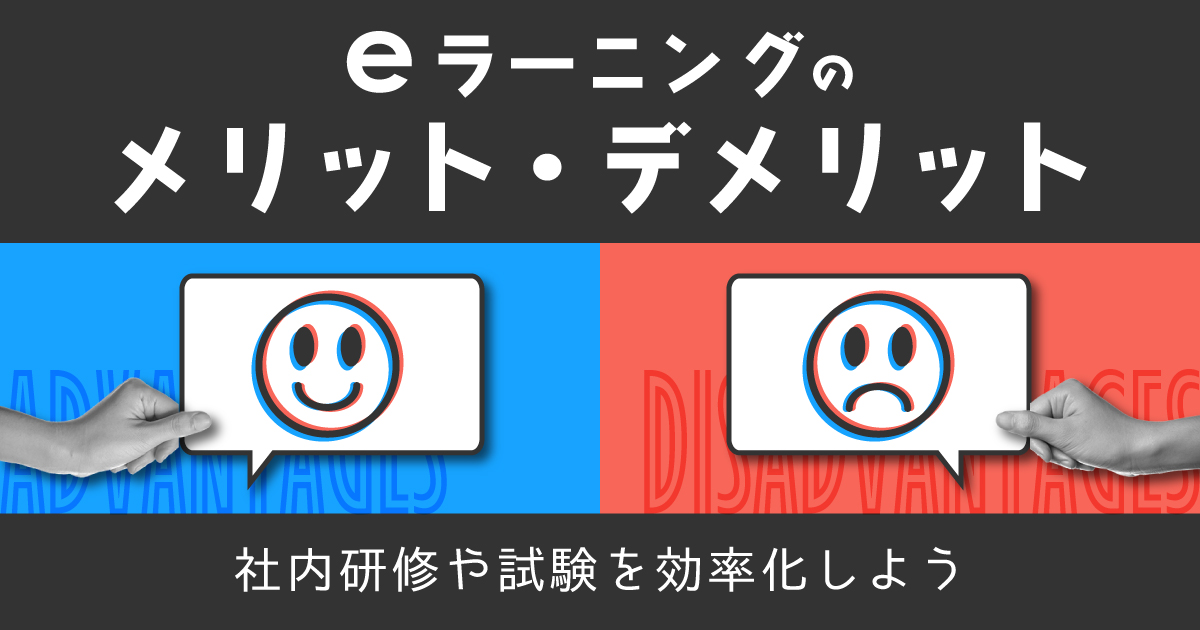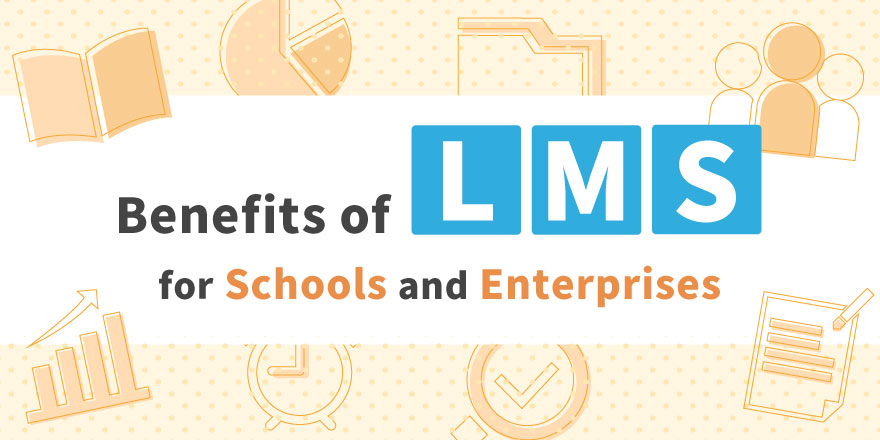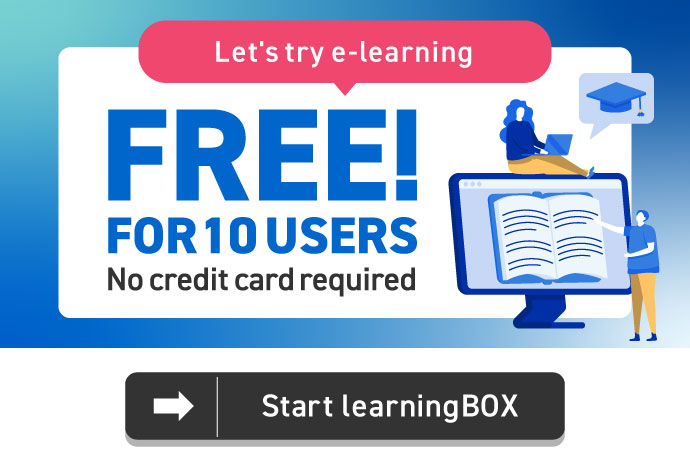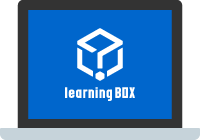Elearning Stimulates Paradigm Shift in Education

The demand for e-learning is increasing as face-to-face training and learning become more difficult in the wake of the new coronavirus infection. e-learning can be taken anytime, anywhere, and more and more companies are adopting it, especially now that more and more people are working from home.
Against this backdrop, many of you may be thinking about implementing e-learning in the future. However, some of you may be asking yourself questions such as, "What is e-learning anyway? Why is the use of e-learning increasing? What is e-learning in the first place?
This article will explain the background of the spread of e-learning, including not only its features and strengths, but also its weaknesses.
What is e-learning?

E-learning (e-learning) is an abbreviation for "electronic learning," meaning a learning system using the Internet.In the business world, it has been adopted as a tool for human resource development. Terms such as "online learning," "web learning," "e-run," and "WBT" are sometimes used with the same meaning.
In most e-learning systems, learning materials and video materials created with HTML/CSS/JavaScript, etc., are generally studied using a web browser. Before the spread of smartphones, e-learning systems were mainly used on PCs, but many e-learning services now support not only PCs but also smartphones and tablet devices.
Back to ContentsHistory of e-Learning

The e-learning form of learning has developed and permeated our lives along with the spread of the Internet and the evolution of mobile devices. Here is a brief history of how e-learning has come to its current form.
<History of eLearning
| date | Movements in the world |
|---|---|
| 1) 1950's - Started in the U.S. | Development began in the U.S. and other countries with the idea that computers could support education. |
| (2) 1990s - Appearance and launch of Windows 95 | In accordance with the "development and diffusion of personal computers," learning methods mainly using CD-ROMs as teaching materials progressed. In 1995, Windows 95, which became explosively popular, was released, and personal computers became widespread in ordinary households. |
| (3) 2000's - In full swing in Japan | In 2000, the then Mori Cabinet launched the "e-Japan Strategy" aimed at realizing a Japanese-style IT society. |
| ④2000s - Spread of smartphones and tablets | E-learning changed even more dramatically in the late 2000s with the advent of smartphones represented by the iPhone and Android, and even larger tablet devices. |
| 5) 2020s - Rapid market growth due to the Corona disaster | The spread of the new coronavirus infection has led to home study in schools and telecommuting in businesses all at once. |
Collective learning and CAI development before the advent of e-learning
Traditional group learning and group education have challenges in terms of time and cost. Specifically, students and instructors need to be in the same place at the same time, which requires preparation, travel time, and transportation costs. In addition, since everyone proceeds with the same learning in a uniform manner, there is a tendency for differences in the level of understanding on the part of the learners.
This led to the development of CAI, a system that presents learning content according to the learner's level of understanding. CAI stands for "Computer Aided Instruction," meaning education using computers.
Birth of "CBT," CD-ROM-based learning
In 1995, Windows 95 was released, and personal computers became popular in many homes and businesses. This led to the emergence of a CD-ROM-based learning format, called CBT (Computer Based Training), which created an environment in which students could learn through multimedia teaching materials that made extensive use of video, images, and sound.
However, CBT had some problems, such as the cost of creating CD-ROMs, difficulty in modifying the program, and the inability of the company to manage the progress of the learners.
Evolution to Internet-based learning "WBT
WBT (Web Based Training), which refers to learning using a web-based system, was developed based on the problems of CBT. WBT enables learners to manage all learning materials and learning history on a server, thereby overcoming the weaknesses of CBT. Another key point for learners is that they can take lectures at any time and place with an Internet connection.
Today, the online learning style described above is called e-learning, and it is used in a variety of situations such as training, knowledge sharing, and distance learning in companies.
Modern e-learning using multiple devices and SNS
The 21st century has seen the spread of mobile devices such as smartphones and tablets, and there is a growing need for e-learning to be compatible with multiple devices, not just PCs. The ability to view e-learning on smartphones and tablets is expected to lower the hurdles to learning and improve knowledge acquisition and motivation to learn.
Another trend in modern e-learning is the use of SNS to promote communication among learners, in addition to one-way feedback from the administrator to the learner. Dedicated contact points, bulletin boards, and internal SNSs have been set up to solicit posts and questions from learners, with the aim of increasing motivation.
Back to ContentsWhy e-learning has become increasingly important

Why has e-learning become increasingly important in recent years? Here are five of the most important reasons.
Reason 1: The Corona disaster made group training difficult.
With the spread of the new coronavirus infection, travel to and from the training site and gathering at the training site itself has become restricted. Many schools have cancelled school attendance and have taken measures such as conducting classes remotely. Web conferencing services such as Zoom are sufficient for one-way delivery of classes and training programs, but they cannot be used to measure understanding or have students submit assignments.
Therefore, by introducing an e-learning system, the scores, learning status, and assignment submission status of each learner can be monitored anytime, anywhere, providing various advantages for both the administrator and the learner.
Reason 2: Diffusion of communication environment and information equipment
With the spread of fiber-optic lines at home and at work, and the spread of high-speed, large-capacity communications such as 4G and 5G on smartphones, viewing videos has become a smooth process. The improved communication environment has also contributed to the spread of e-learning, as it has become easier to manage data centrally on a server and allow users to retrieve data when they need it.
Dissemination in the education sector
Under the GIGA School Initiative promoted by the Ministry of Education, Culture, Sports, Science and Technology (MEXT), elementary, junior high, and high schools are beginning to provide one learner terminal per student. Depending on the school's policy, the degree to which students can freely use the terminal and whether they can take the terminal home may vary, but at least one terminal per student is becoming an environment where each student can use the terminal exclusively.
In addition, most students now have smartphones. In the early days, smartphones were not as powerful as PCs and were limited in what they could do. Recently, however, the performance of smartphones has improved, and web content designed for PCs can now be viewed with almost no problems. Many websites are now accessed more frequently from smartphones than from PCs, and many websites are now optimized for smartphones.
Public dissemination
Mobile Society Research Institute SurveyAccording to the "Smartphone and Cell Phone Ownership Among Men and Women Aged 15 to 79," the smartphone ownership rate among men and women aged 15 to 79 will reach 94% by 2022.
Smartphone ownership among the working-age population is higher, making it feasible to offer e-learning via personal devices, although security considerations still need to be taken into account.
In e-learning, the same content is generally provided to a large number of learners, and a high level of confidentiality may not be required. If a high level of confidentiality is required, measures such as restricting learning to company PCs are necessary.
Reason 3: Increased sophistication of work
With the advancement of information technology, the knowledge required to carry out work has increased overwhelmingly. We no longer live in an age where we can eat off the knowledge and skills we learned in school for the rest of our lives. Workers need to constantly acquire new knowledge and skills. New knowledge and skills need to be acquired in a timely manner, and there is not always someone nearby who can teach them.
Telework has become commonplace, and now people can work from any location. E-learning is suitable for deploying business manuals and materials on legal revisions created at the head office in Tokyo to offices scattered across the country.
Reason 4: Generalization of mid-career hiring and career change
Today, changing jobs has become more common. It is becoming less and less common for new graduates to stay with a company until retirement. As a result, the timing of hiring and entry into the workforce has become more varied, and training is now provided according to the time of entry, rather than hiring new graduates in batches and providing the same education and training over the course of a year.
If an educator takes time to train each new hire, it can interfere with the work that should be done. Mid-career hires vary in job types and skills, so if everyone is trained at the same level and speed, it is inefficient and does not motivate the learners.
In such cases, e-learning can be used to prepare training suitable for each individual according to his or her level of understanding and to provide training efficiently.
Reason 5: Document sharing systems alone are not sufficient
For the purpose of distributing manuals, document sharing systems such as Google Docs or Google Spreadsheets may seem sufficient, but document sharing systems cannot adequately monitor viewing and learning status.
In addition, it is difficult to monitor the level of understanding because it is not possible to conduct confirmation tests, etc. Therefore, an e-learning system is suitable for "cases where learning is essential and evidence of learning must be retained.
Back to ContentsBenefits and advantages of implementing e-learning

If you are currently struggling with how to train employees, share accumulated knowledge within your company, or develop human resources, e-learning is a great option. e-learning brings benefits to both managers and learners. Please see the table below for details.
<Benefits of e-Learning
| Administrators | - Cost savings can be expected - Centralized management of learner progress, grades, and attendance information - Easy to revise and update materials to the latest content - Easy to provide appropriate learning materials for each learner |
|---|---|
| student | - Repeatable - Fewer restrictions on location and time - Easy to monitor learning progress and understanding - Easy to work on smartphones and tablet devices |
Disadvantages of e-learning and their countermeasures

By understanding the weaknesses of e-learning, you can take steps to address them when you implement e-learning. We will explain specific countermeasures to help you.
Difficult to maintain motivation
In the case of e-learning, the educator and learner do not meet face to face. Therefore, unlike schools and other educational settings or corporate group training, motivation cannot be maintained by the skills of the educator.
In order to maintain motivation, it is of course important to provide interesting and effective learning materials, but e-learning courses are often conducted during work hours or while traveling, so a "micro" structure is preferred. While a typical school class or group training session lasts 45 to 90 minutes, a few minutes per session is preferable for e-learning.
In addition, e-learning programs may use systems such as rankings, badges (medals), and guilds (teamwork and joint responsibility), similar to those used in social games, to arouse a desire to collect and a competitive spirit.
I can't see the learner's face.
The "in-your-face" situation also means that we don't know the learner's level of understanding, what they are feeling, or what questions they have. Including questions to check comprehension will give you an idea of their level of understanding. You can check their feelings and questions by asking them to answer questions in the form of a report or a questionnaire.
E-learning allows students to complete their learning online, and because they cannot see each other, careful communication is necessary.
Difficult to secure content
While it may seem difficult to create educational materials from scratch, some e-learning systems allow users to upload and use content that already exists.
For Schools
Some e-learning systems for schools provide teaching materials that are aligned with educational guidelines and textbooks. By using such e-learning systems, you can introduce e-learning without the hassle of creating teaching materials.
For private companies
If the content is directly related to work, there are no ready-made materials available, so it is necessary to either create the materials in-house or use an e-learning materials production company. Using an outsourcing company makes it easier to create great-looking content, but it is also more expensive and difficult to update the content, so it is important to distinguish between outsourcing and in-house support.
Back to ContentsWhat you need to implement e-learning

When implementing e-learning, you need to prepare two main components: a learning management system (LMS) and learning materials. Here we introduce each of them.
Learning Management System (LMS)
LMS is an abbreviation for "Learning Management System," a system that enables the creation and distribution of e-learning learning materials and the centralized management of learning progress and grades. It is the foundation for the development of an environment that supports the implementation of effective e-learning.
learning material
Even if a high-quality system is prepared, it will be a waste of treasure if there are no learning materials with high learning effectiveness. Systems that allow the creation and selection of various types of quizzes, tests, questionnaires, etc. are now available so that high quality teaching materials can be created.
When preparing learning materials, choose the best of the following three methods depending on your objectives and budget.
- Use off-the-shelf products from companies that provide educational materials specialized in areas such as sales and PC skills.
- Hire an e-learning company to produce the e-learning program.
- Produce using only your own resources
Use e-learning to create an efficient learning environment!
In this issue, we have reported on the history of e-learning, the reasons for its growing importance, and its advantages and disadvantages. e-learning is expected to be used by more and more people in the future, and will be introduced in more situations than ever before. Let's build an environment for efficient learning by taking advantage of its merits and covering its demerits well.
If you are considering implementing an e-learning system in conjunction with your e-learning implementation, please contact us at "learningBOX Please take advantage of the "e-Learning System. This e-learning system is characterized by its ease of use, which requires no complicated operations, and its reasonable fees, making it easy for even those with no specialized knowledge to create teaching materials and tests.
Up to 10 accounts are available free of charge. Free Plan to see how it works.
▼You may also like:
Back to Contents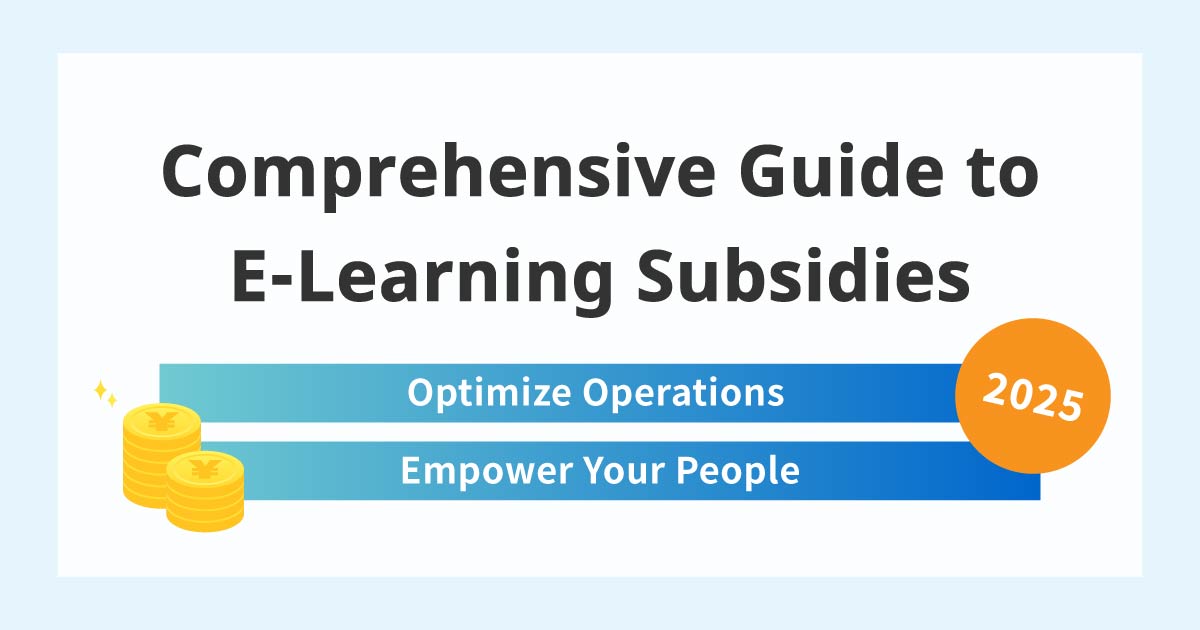

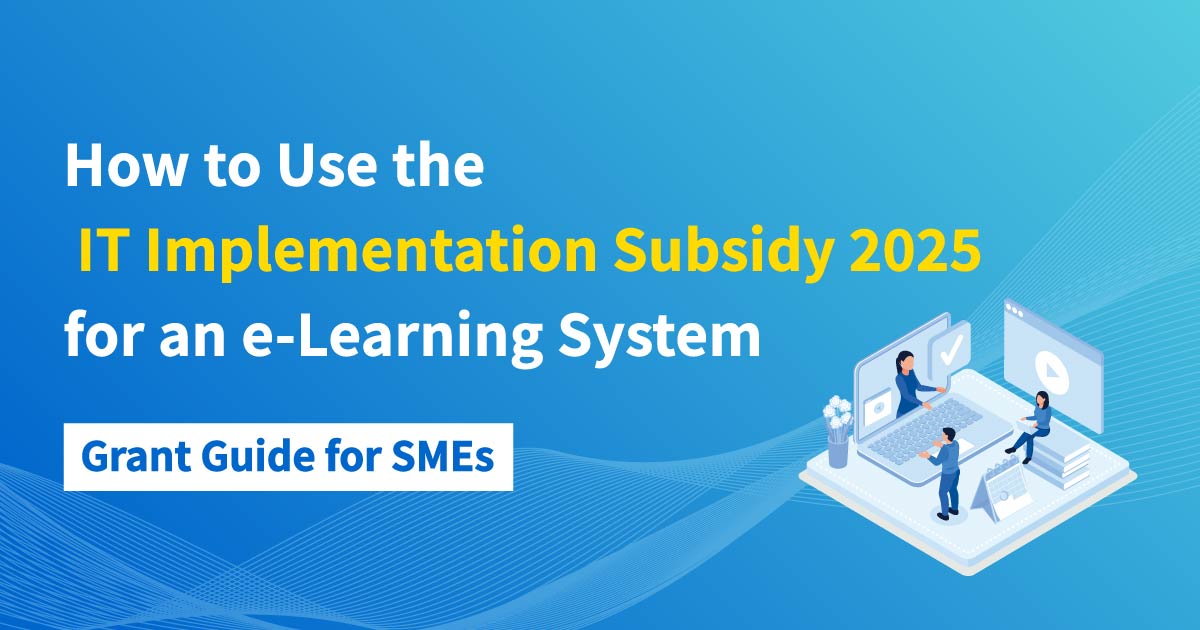
-
Discover rich featuresService Guide
-
Feel free to contact usGet in Touch
-
Try our Free PlanTry Free Plan


